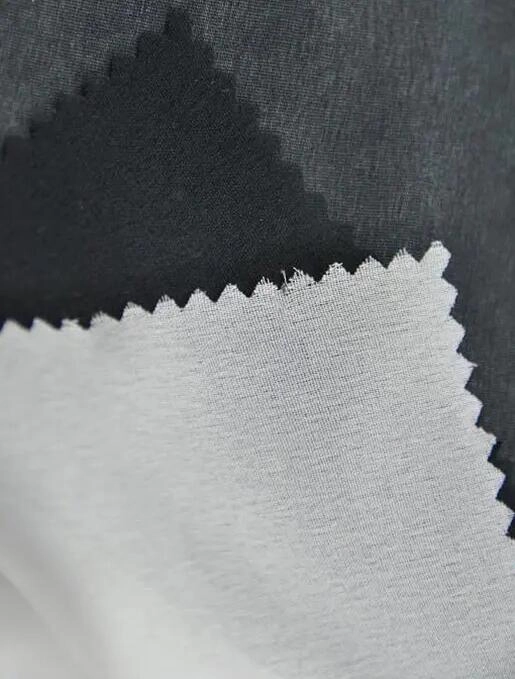Fusible interlining fabric is a textile used between garment shell fabric and its lining fabric to increase stability, softness, and attractiveness. Fusible interlining has long been used as part of garment construction for this reason and comes in various forms depending on substrate and application - such as being either woven or non-woven based upon application - reinforcing certain areas such as collars, cuffs, and shoulders; creating eye-catching designs or adding luxurious feel with luxurious feel added into clothing designs.
Apparel fusible interlining fabric is made up of two fabrics fused under heat and pressure to provide stability and smoothness. This material can be used with both woven and knitted materials and is typically made of polyester or cotton for optimal use in producing skirts, dresses, trousers and shirts - often giving formal attire such as suits or blazers a more professional appearance.
Fusing can be a complex process that involves many considerations to produce optimal results. Dwelling time, temperature conditions and adhesive quality must all be carefully taken into account as part of this process; additionally, the size and thickness of fabric must also be taken into account during fusing; various ways exist for adjusting this process but one popular way is using a steam press machine.
Fusing generally involves heating to 1650 to 1700 Celsius for an extended period, melting resin into sticky form and sticking it onto fabric fibers. Fusing must be performed correctly to ensure interlining does not get damaged during this process and secure bonds form between pieces; failing this could impact on garment appearance.
Apparel manufacturers will assess which parts of a garment require fusible interlining and select an appropriate material, creating patterns to mark where it should go and cutting fabric to match, then ironing it on using either dry or steam irons.
Fusible interlining fabrics come in different varieties and each has its specific advantages and drawbacks. If the fabric is designed for washability, then its moisture and soil resistance must be high; otherwise washing and drying could alter its shape or even rip it. Dry-cleaning options also exist with some of these materials.
Fabric designed for knitted or woven materials must possess adequate strength to withstand strong tension, which will enable its seams and other details to hold together under strong tension. Furthermore, the fabric must withstand strong creases and abrasions without fraying.
When selecting the appropriate apparel fusible interlining fabric, conducting extensive research is a must. Multiple companies are producing this material; each offers its distinct properties. To select one that best meets your needs and demands, visit a specialty store and seek their advice.

